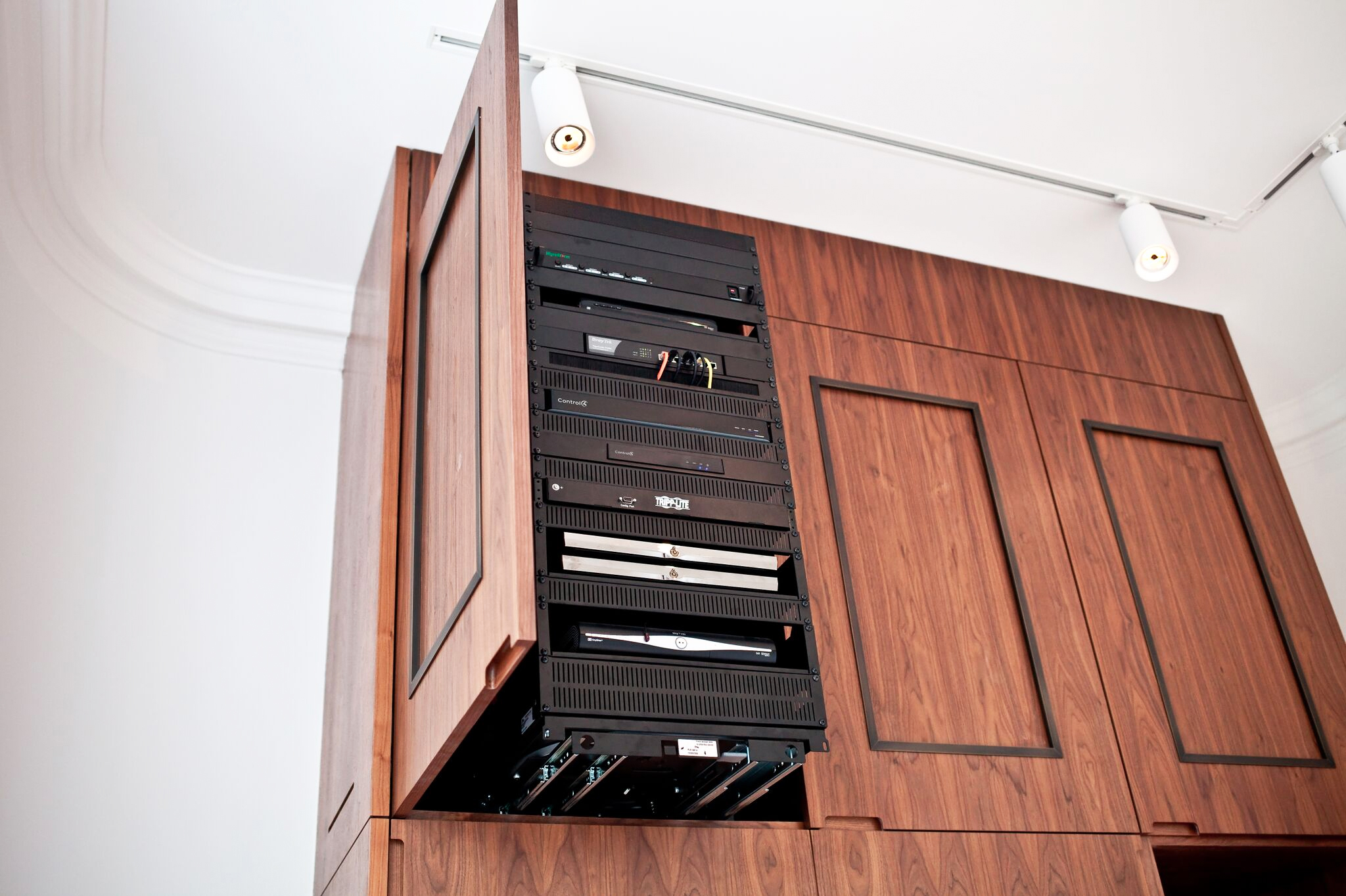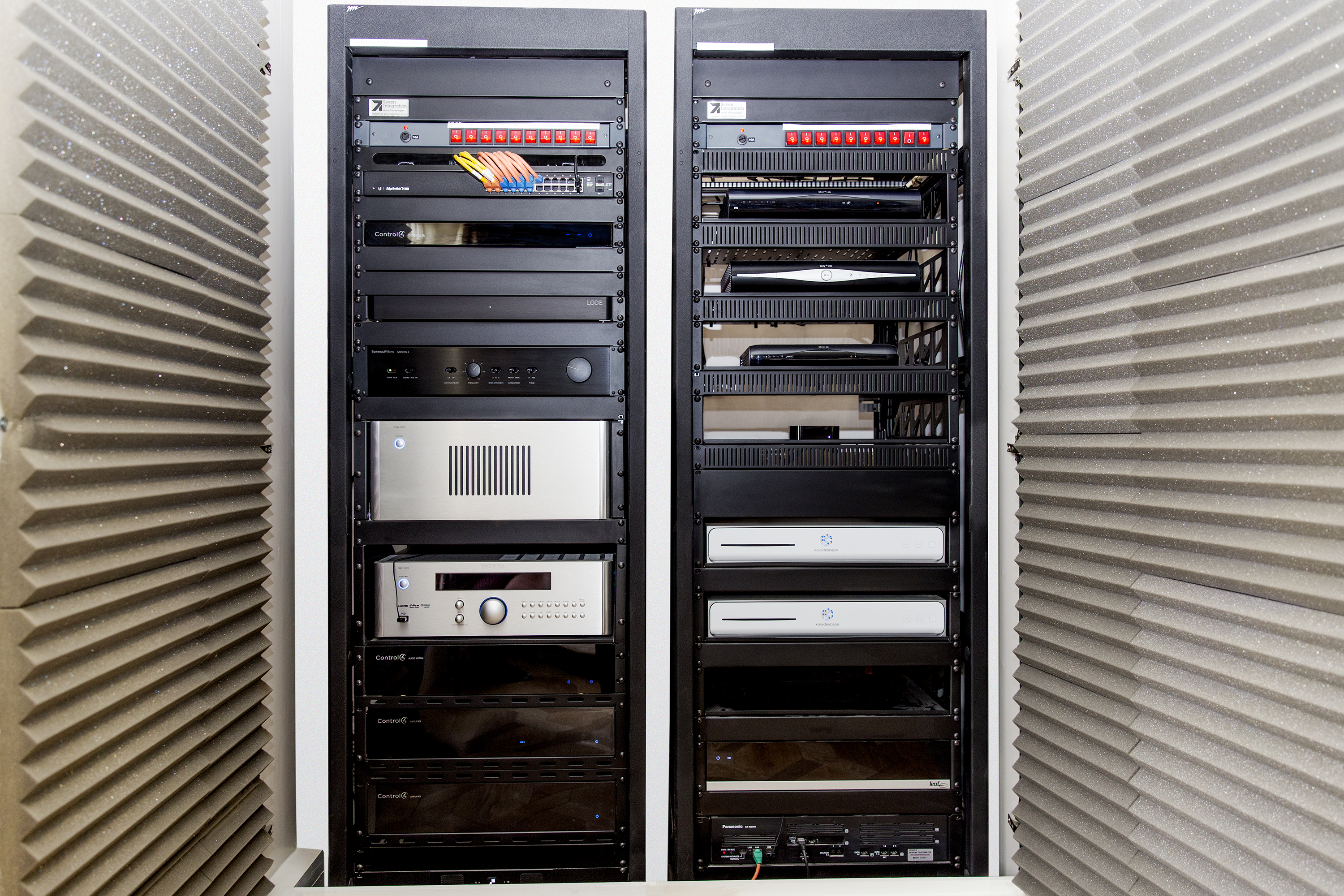Heat Management in your equipment rack is crucial.
Any respected home technology professional should be implementing some kind of heat management system into their rack design. Every piece of hardware plugged-in to your electricity supply will produce heat. With enough kit in your rack, this heat can add up to a pretty impressive heat source. The problem is, electrical equipment like the hardware we install for clients does not like excessive heat, and so we are tasked to keep it cool – or at least within specified parameters.
Heat is measured in British Thermal Units per hour (BTU/hr). 12,000 BTU/hr requires 1 ton of air conditioning (400CFM on most units). As home technology professionals we must first consider removing the heat from the rack, and then removing that heat from the room – this is sometimes a step that is overlooked, but unless you can remove the heat from the room then everything else is a waste of time.

